Sightseeing Spots
Search Results314
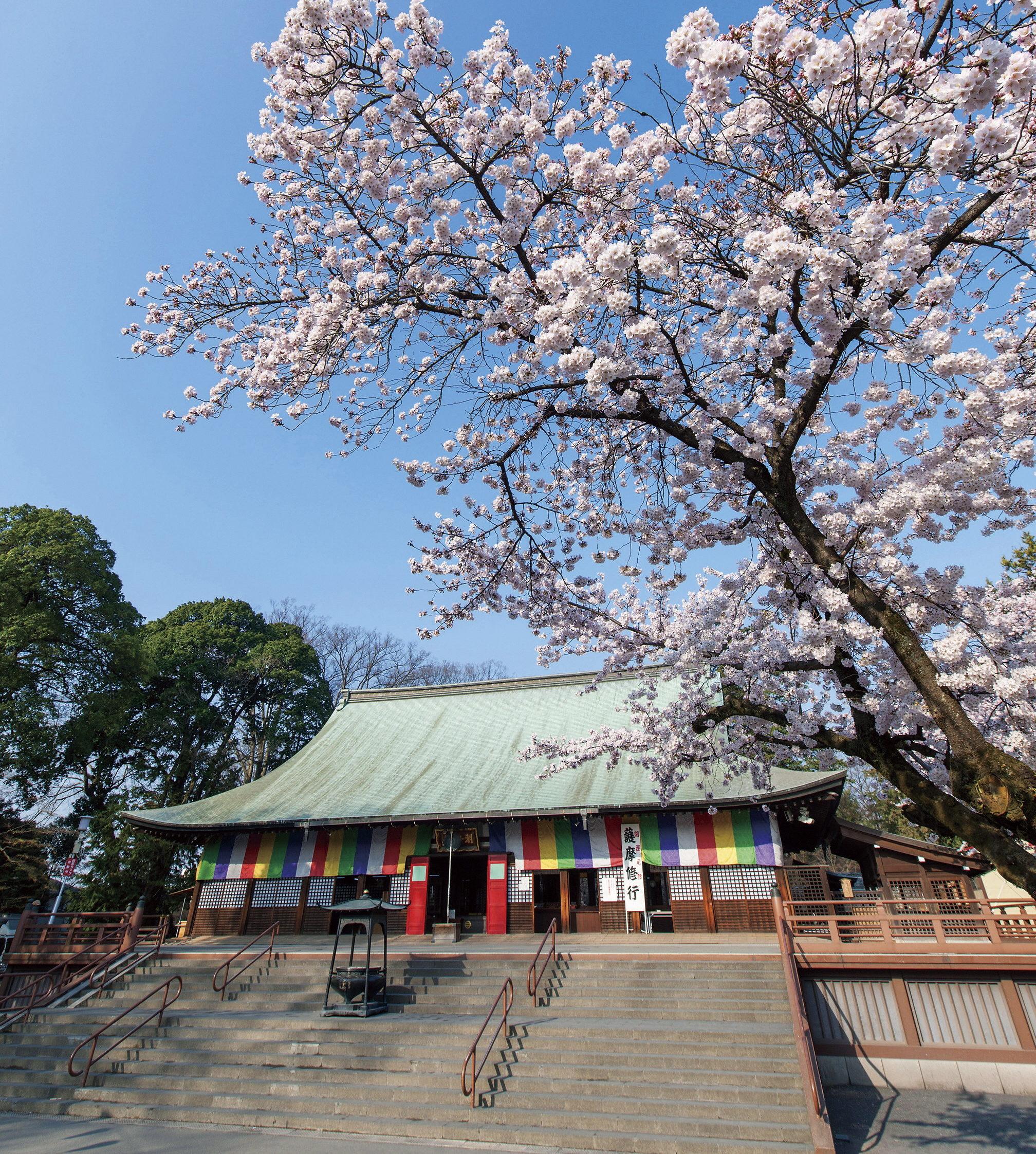
Kitain Temple thrived after the appointment of Sōjō Tenkai, entrusted by Ieyasu Tokugawa, in 1612. Most of the temple burnt down in Kawagoe's great fire in 1638, but was renovated during the Edo period by the third generation shogun Iemitsu, who transferred the "Iemitsu Birth Room" and "Kasuga Bunkachi Makeup Room" to the temple from the Edo castle. In addition, the entire area was designated as an important cultural property. One of Japan’s three major arhat, “Gohyakurakan”, can be seen here.
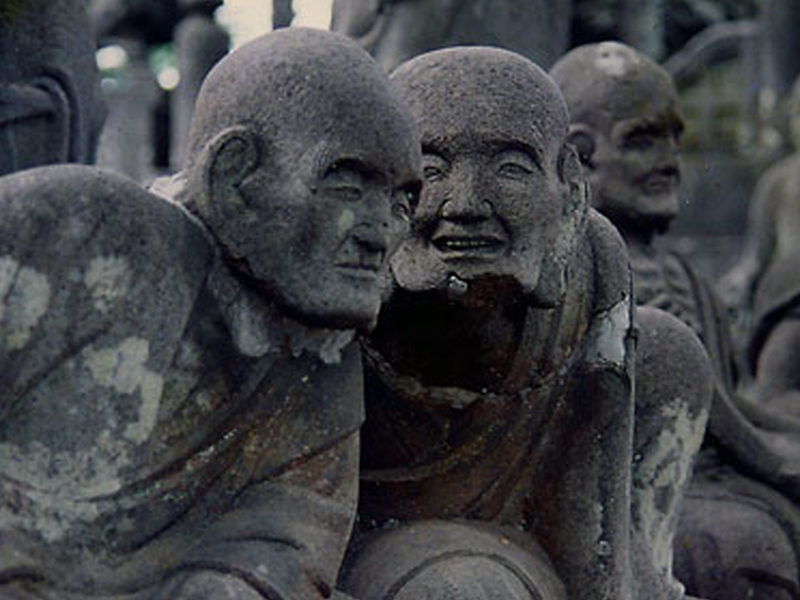
"Rakan," or "Arhat," is a Buddhist term signifying a spiritual practitioner, or high priest, who has attained enlightenment. The 500 Rakan of the Kitain Temple are one of Japan's three great Rakan and took 50 years to complete. The 538 stone statues are famous for expressing a wide range of human emotions and for each having a unique action. According to legend, if you visit at night and touch the heads of the statues, only one will be warm, and it is said that this statue's face resembles the sculptor's deceased parent.
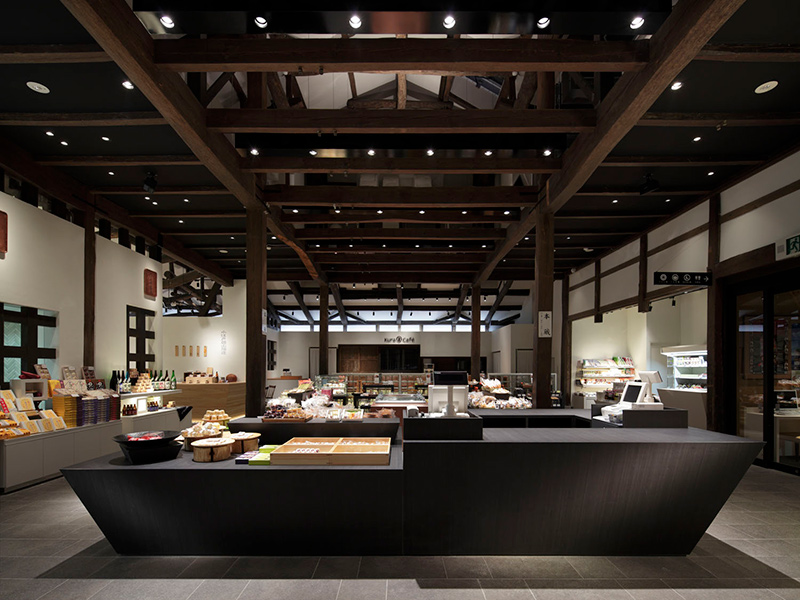
Koedo Kurari is an improved facility retaining the atmosphere of the original Kyūkagamiyama brewery, established in 1875. The brewery, built through the Meiji, Taisho, and Shōwa periods, was remodeled and designated as one of Japan's registered tangible cultural properties along with the three warehouses: souvenir shop (Meijigura), Restaurant (Taishōgura), Japanese sake shop (Shōwagura), and meeting space (Tenjigura).
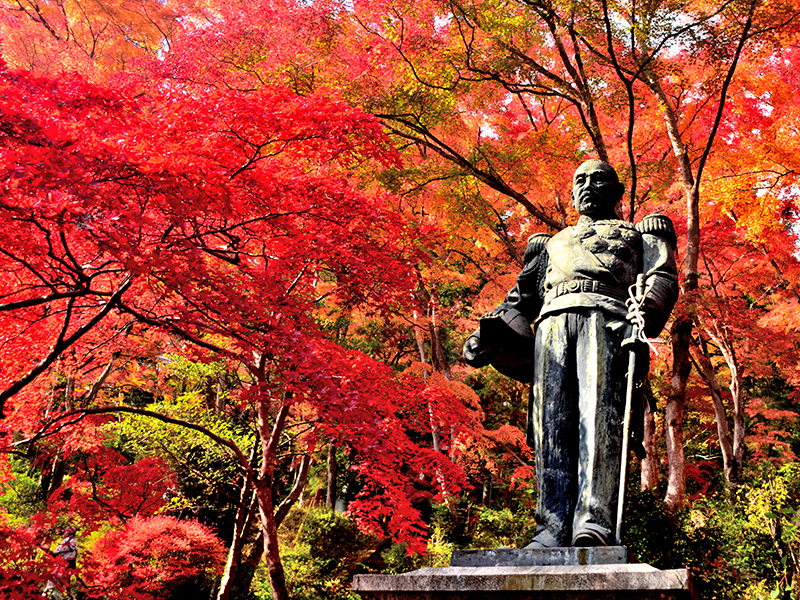
This shrine is dedicated to the spirit of Mt. Ontake, the sacred mountain of the Kiso district of Shinano Province. It is said to have a great spiritual power effective in dispelling bad spirits and bringing good fortune to all who visit. The shrine garden covers an area of almost 1,000 square meters, and includes Togo Park, a park associated with General Togo Heihachiro, within its precincts. The shrine performs various kinds of purification ceremonies (oharai) such as groundbreaking ceremonies, house purification, car purification, and purifications for Shichigosan (ceremony celebrating children at the age of 3, 5, and 7) and for the first shrine visit of the year.
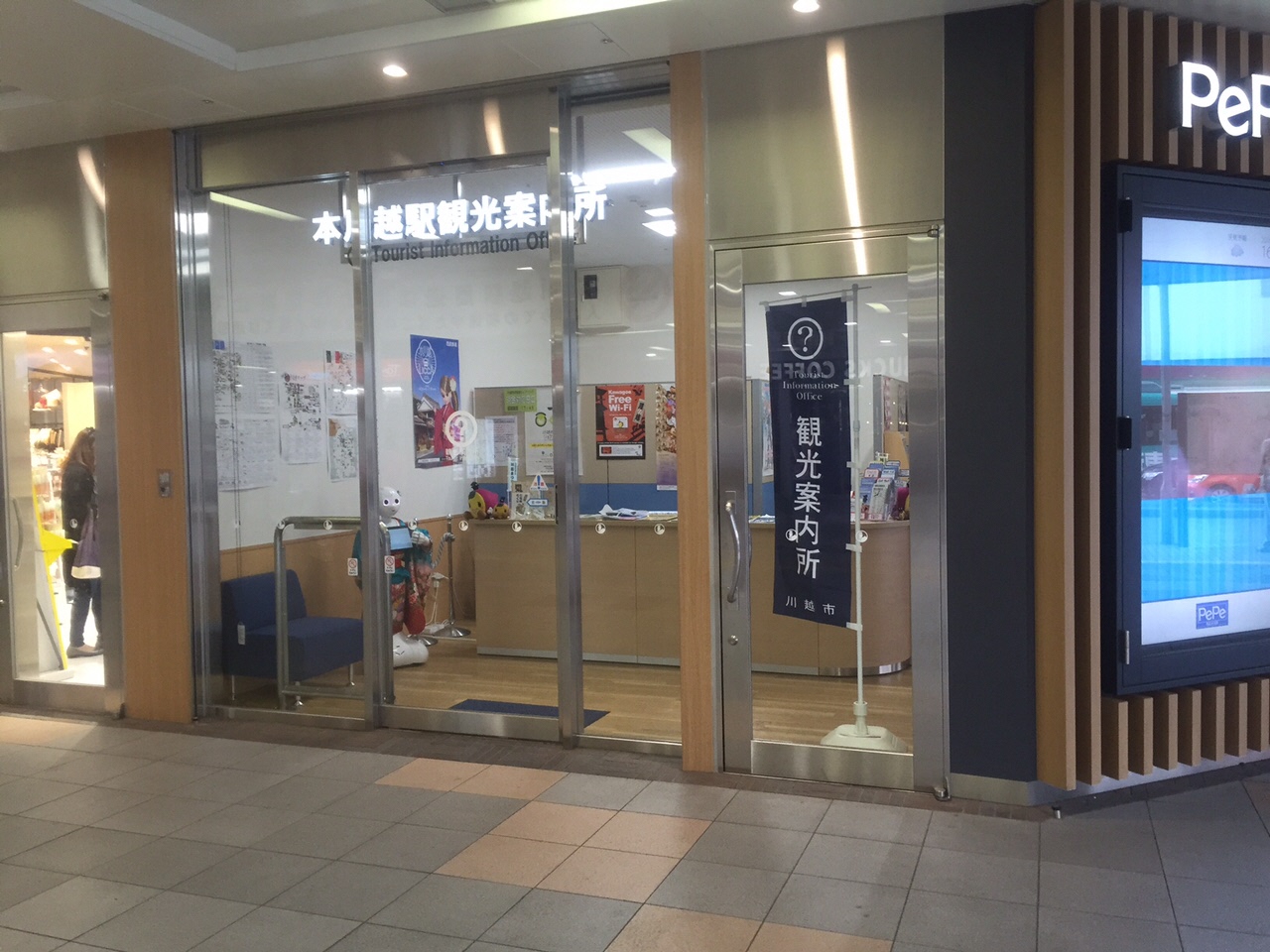
Located on the first floor of Pepe Honkawagoe Station of Seibu Shinjuku Line, we offer tourist information and sightseeing brochures. We are the closest visitor information center to Koedo Kawagoe and the Kurazukuri townscape. In addition, we offer wheelchair rental and baggage storage services (payment required).
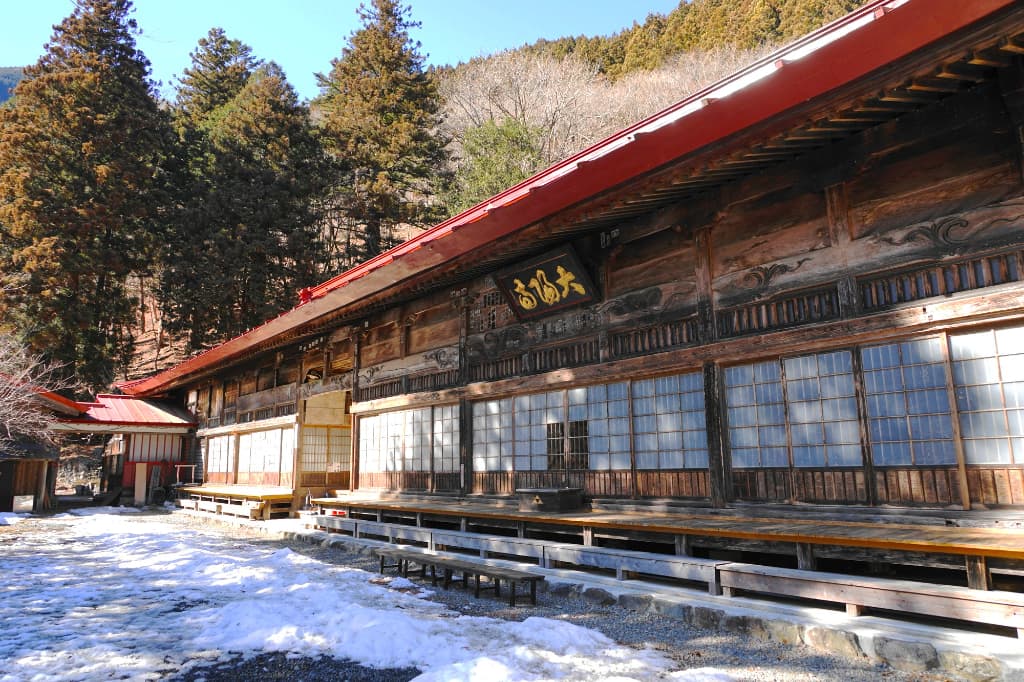
Taiyoji Temple, quietly tucked away in the mountains at an elevation of 800 meters, is said to have been founded about 750 years ago. It is recognized as one of the 13 Buddhas of Chichibu pilgrimage sites. Situated in a secluded valley where even phone signals cannot reach, the temple offers a tranquil space far removed from the clamor of daily life. By sharpening your senses and spending time immersed in the unspoiled beauty of nature, you can find a deeper connection with your inner self. From spring through autumn, visitors can take part in zazen meditation, sutra copying, and temple lodging experiences (reservation required), enjoying a spiritual journey that brings profound healing to both mind and body.
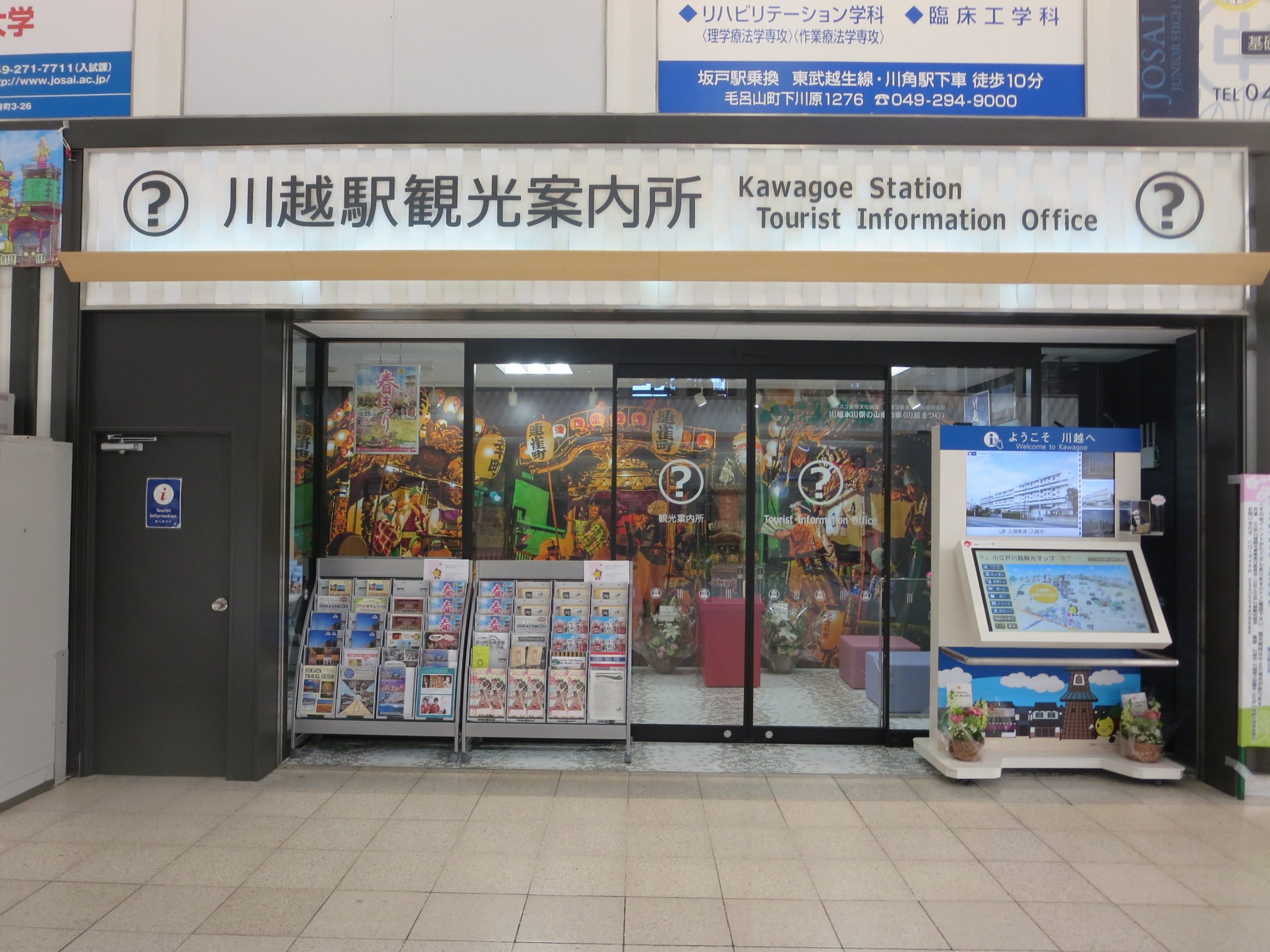
We offer tourist information and sightseeing brochures. We are conveniently located inside Kawagoe Station and can be used as a base for strolling around Kawagoe, with the Edo-style Kurazukuri Warehouse Street just a 15 minute walk away. Rental services for wheelchairs and baggage storage are also available (payment required).

We sell over 450 types of souvenirs representing Saitama. In addition to the well-loved Sōka Sembei (rice cracker), we also sell many popular products unique to the Saitama area, such as Koedo Kawagoe Imo (sweet potato) sweets, Ajino Sayamacha, locally brewed alcohol and traditional crafts and goods featuring Saitama Prefecture’s mascot “Kobaton."

Hanataen is a traditional Japanese strolling pond garden (kaiyu shiki teien) of about 2 hectares, with a characteristic wooden bridge centered on a beautiful pond, a tea room built in Sukiya style, a man-made hill overlooking the garden and elegant stone lanterns. Various trees such as cherry blossoms and plums also grow, and you can enjoy the seasonal flowers and foliage. In addition, the garden is adjacent to Saitama Prefecture's only outdoor Noh (traditional theater) stage, Koshigaya Noh Theater. A great place to both enjoy the beauty of Japan's culture and the four seasons.
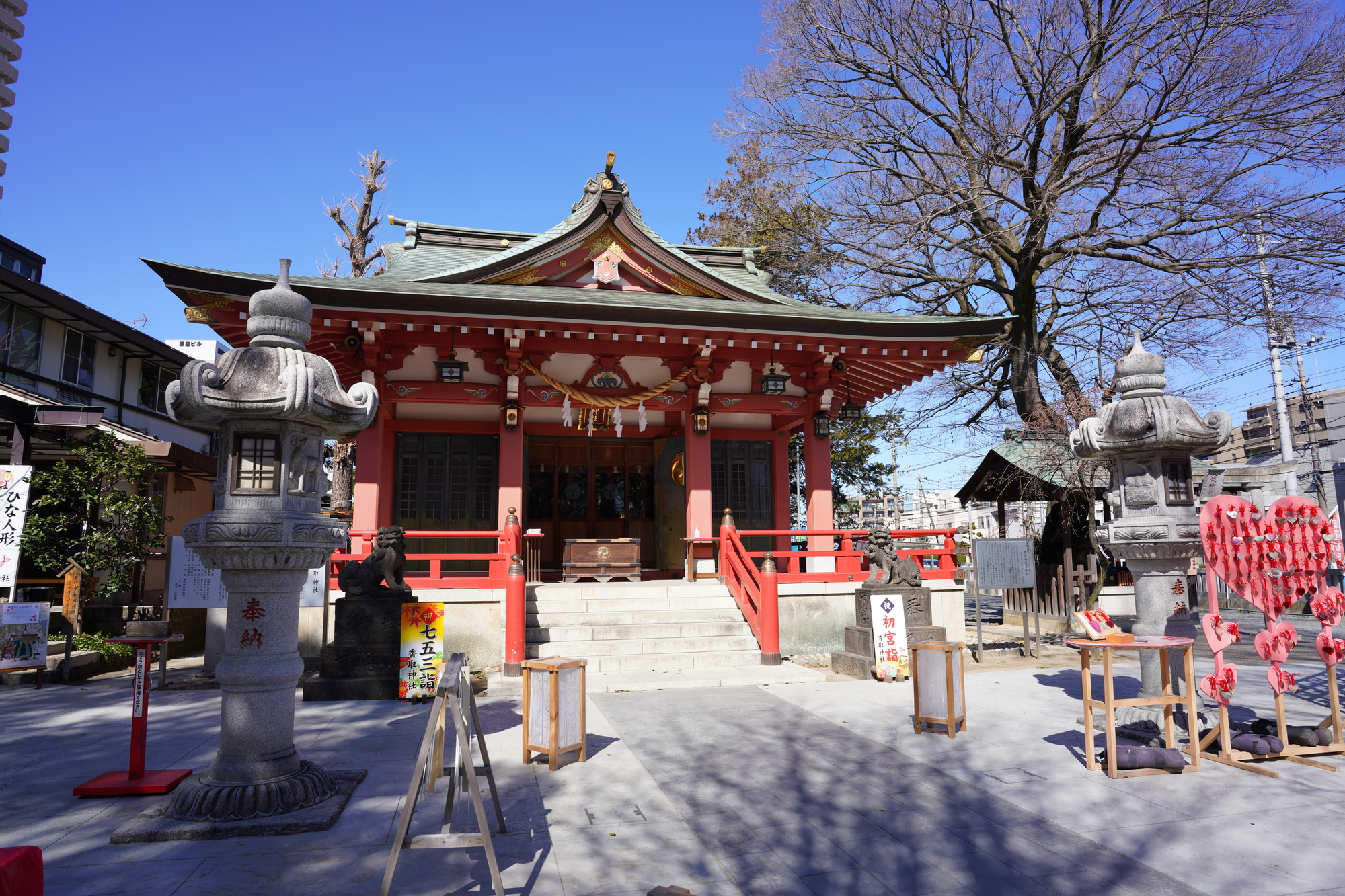
This is the Ōsawa village shrine. It is said the Katori Shrine was transferred here from Sagishiro. The “Meisaichō” notes the shrine's establishment as Ōei era (1394 to 1428). This area belonged to Shimōsa Province in the middle ages, and Katori Shrine, the province's first shrine, was invited to the village as its guardian deity and built in Sagishiro. It was moved to its current ground around the Kan’ei era (1624 to 1644) due to the maintenance of the Ōushū Kaidō. According to the sign displaying date of construction (munafuda), the current main shrine was renovated in 1866. A pattern from the fabric-dyer is engraved around one side of the main shrine. It is the work of Takejiro Hasegawa who resides in Mount Asama San’ya-machi and is the city’s designated cultural property.

At the Hanayoi Glass Studio run by Tamami Sudo, a glass artist who has had numerous exhibitions at famous department stores, you can try your hand at glass blowing and sandblasting (reservations required). Participants receive careful instructions which are easy for even beginners, and the workshops are popular for making wedding anniversary or children's milestone mementos. The stunning works of Tamami Sudo that are on display in the studio.
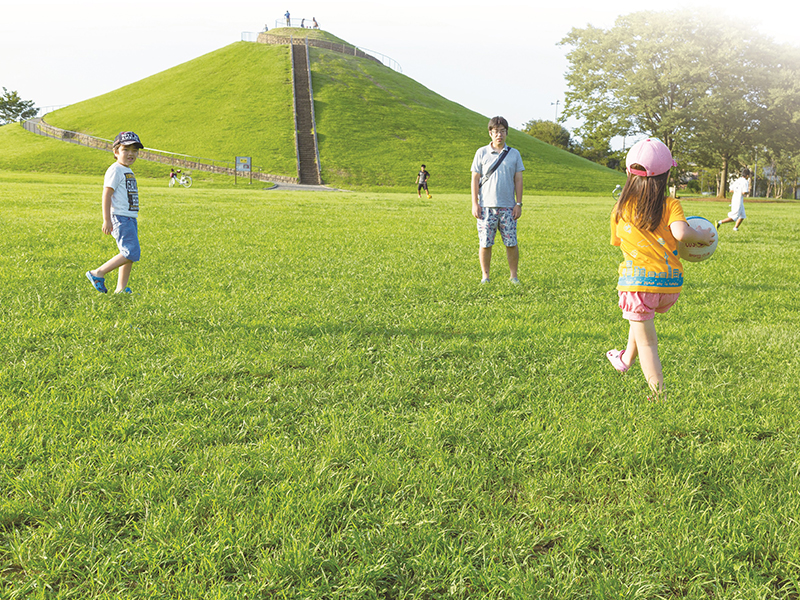
From the top of the park's symbol, the 16-meter high "Yoshikawa Mount Fuji," you can enjoy a panoramic view of the city. On a clear day, you can see the Tokyo Sky Tree and, if you're lucky, you can even see the real Mount Fuji! The majority of the park is covered by green lawn, making the park feel spacious and open.
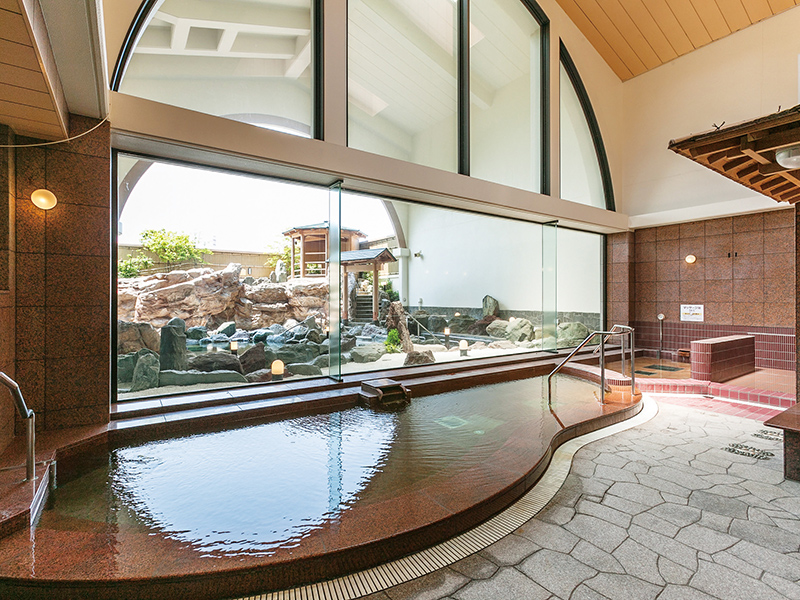
The bath uses water close to the source, a gensen (hot spring source) 2,000 meters underground. The water is rich in sodium and heats the body to its core. Due to the warming effects of the sodium, the bath is known as "Atamari no Yu" (warming bath). In addition, the hydrogen ion concentration is pH 8.1. This low alkaline water also helps soften dead skin cells, earning the bath the additional name of "Bihada no Yu" (bath for beautiful skin). Please enjoy the exquisite waters from the Kachōfūgetsu source. Also on the premises of this vast facility are a beauty salon, a massage parlor and a refreshing oxygen room. We offer a relaxing environment for each and every customer. (Please refer to the URL below for more information regarding the facility.)
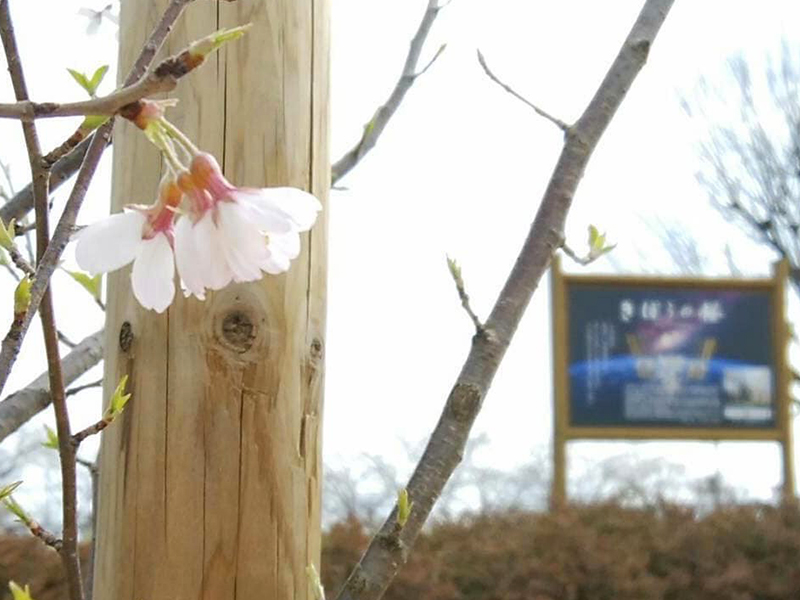
In 2008, cherry trees, which were sprouted from the seeds of the Jindai cherry tree in Hokuto City, Yamanashi Prefecture, traveled to space with astronaut Koichi Wakata, and were subsequently planted in Seki Park on April 6th, 2019 through the Kibou (Hope) Cherry Blossom Project, a project aiming to plant cherry trees in municipalities affected by the 2011 Tohoku earthquake and tsunami. The decision to plant the trees in Yoshikawa City was based on the children's communication with astronaut Kanai Yoshishige in space, the dispatching of staff to Iitate Village in Fukushima Prefecture, which was evacuated after the 2011 earthquake, and the desire to pass on an explanation of the damage caused by Typhoon Kathleen from 70 years ago to future generations. The Sakura Festival is also held at Seki Park every March.
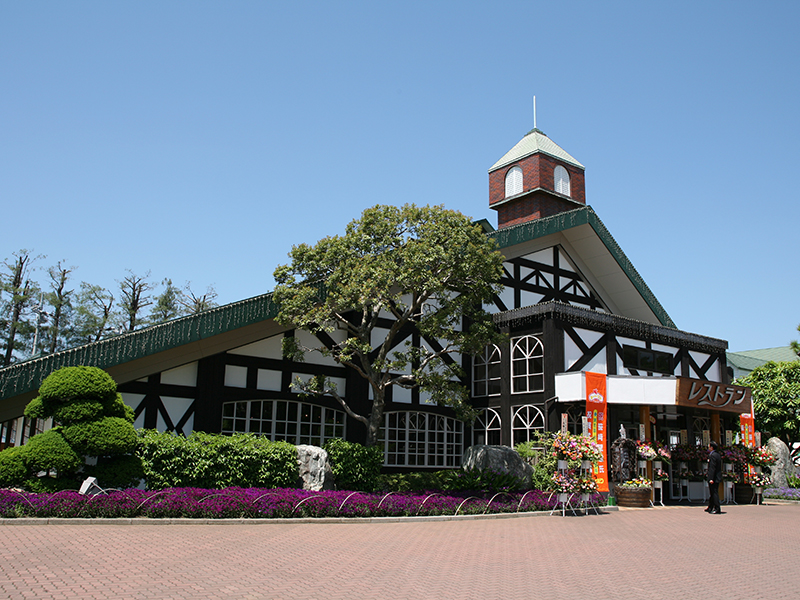
Established in 1946, our slogan is “from farm to dining table,” and we take pride in producing healthy and delicious ham and sausages using meat from the pigs raised on our farm. The quality of our product has been recognized for its authenticity in Germany, and has won many gold awards in international food contests. Featuring a theme park revolving around pork and health, there are gourmet pork meals, a farmers market selling local fresh vegetables and a relaxing hot spring, for a day full of leisurely fun.
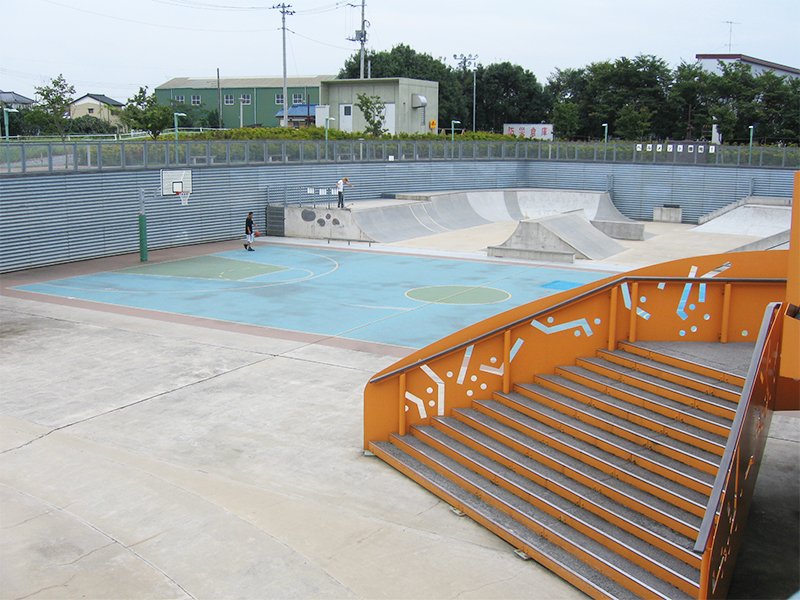
A park born from a conversation between the city mayor and a young participant of a Coming of Age Ceremony, it features a skate park, basketball court and an outdoor stage, making it rare within the prefecture. During heavy rain, the park becomes a regulation pond to reduce flood damage to nearby houses.
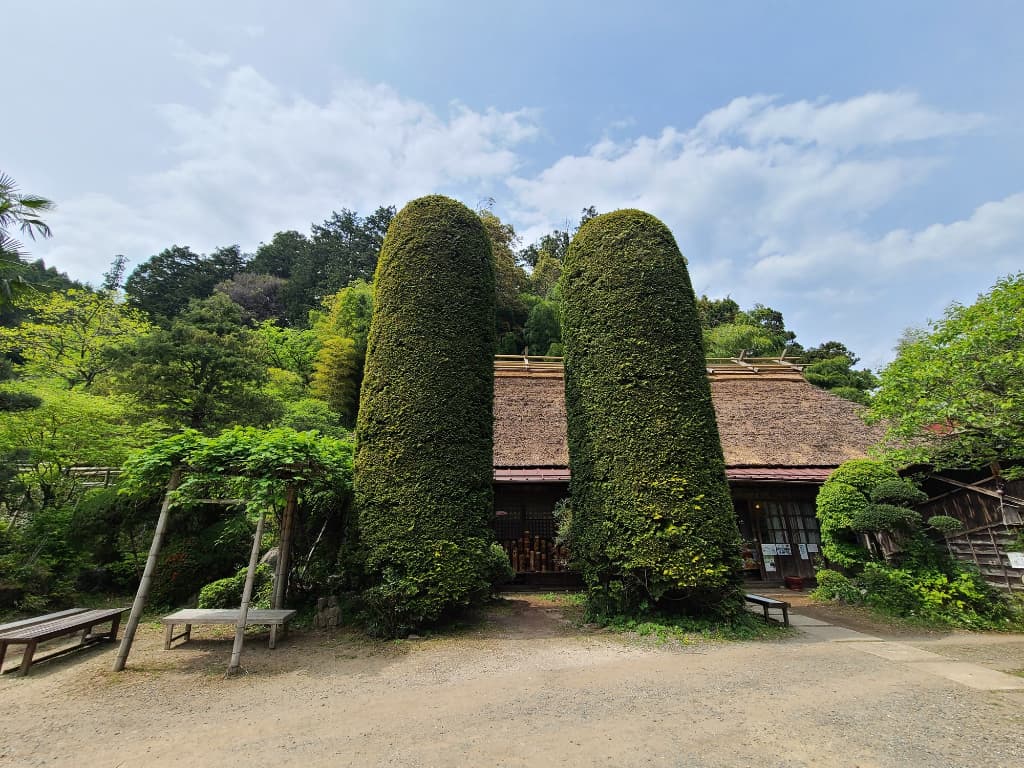
Iozan Yakujuin Hachioji Temple in Hanno City is also known as "Takedera" (Bamboo Temple) because its spacious grounds are densely covered with bamboo groves. It has over a thousand years of history as a training site for mountain worshippers, and offers exceptional shojin ryori (Buddhist vegetarian cuisine). The shojin ryori served here features seasonal mountain vegetables and various medicinal herbs, served in bamboo vessels that are unique to this temple surrounded by bamboo - a refreshing presentation that delights the eye. The dishes are also accompanied by strips of paper inscribed with haiku and seasonal flowers, which embody the beauty and spiritual richness deeply rooted in Japanese culture. Please savor to your heart's content this simple yet refined shojin ryori that brings out the natural character of each ingredient. The main hall enshrines Gozu Tenno, a syncretic deity that emerged from the blending of Shinto and Buddhism, who is worshipped as a protector against illness and misfortune. By the shrine gate at the entrance to the main hall, you'll find a chinowa (sacred rope ring). Make sure to pass through it while praying for the purification of your mind and body.
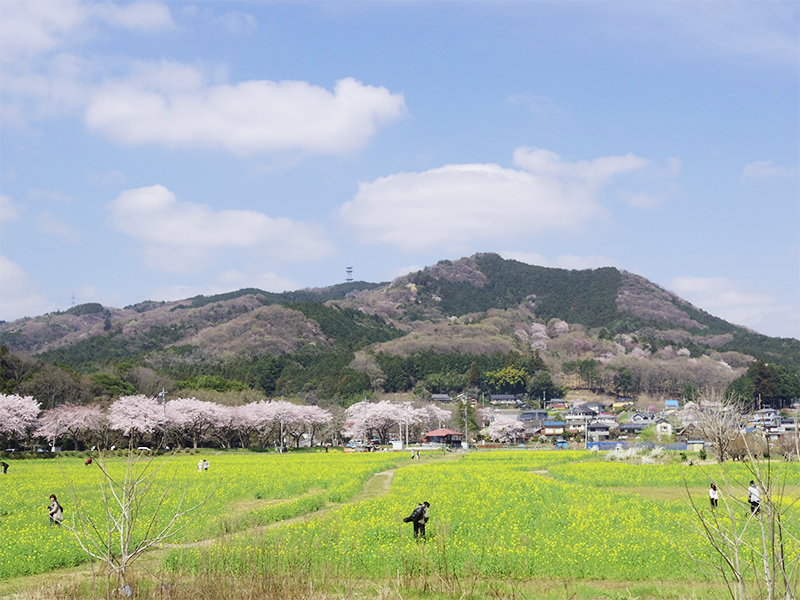
With a height of 305 meters, this charming little mountain is a familiar symbol of Hidaka City. There are hiking courses with a variety of terrains, including a gentle slope for beginners and a rocky slope for the veteran climber. At the top of the mountain is a Japanese Hokyointo Pagoda and the entire area of Hidaka City is visible from here. On a clear day, you can even see the skyscrapers of Shinjuku and the Tokyo Sky Tree towering in the distance.

This residence, built during the end of Edo period to the first half of the Meiji period, centers around the main building and guest hall, which includes a barn and two storehouses. Featuring stone and white walls built facing the road, it is a beautiful representation of Komago scenery. The residence was designated as a national tangible cultural property in 2014.
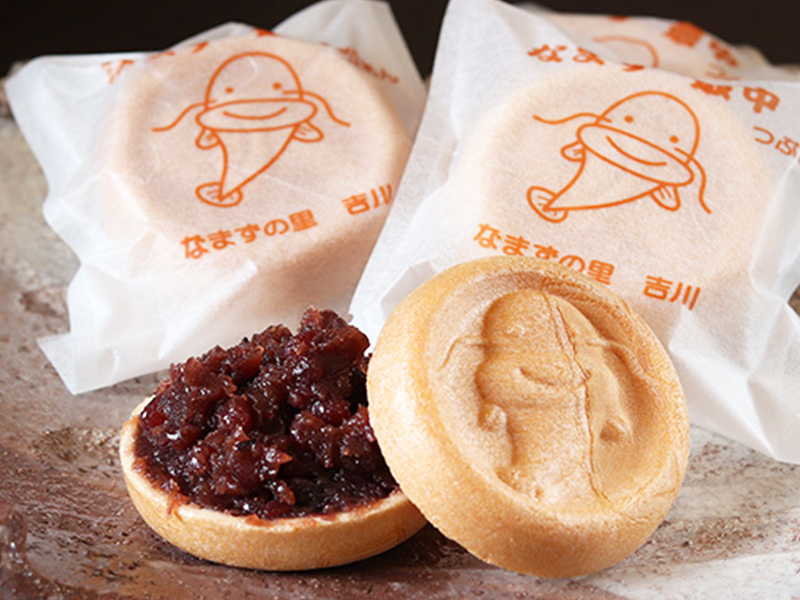
A well-established Japanese sweets shop in Yoshikawa City that has been in business for 60 years. It was relocated to behind Yoshikawa Shrine and reopened in 2019. The famous "Namazu Manju," made from homemade red bean paste cooked with a rare attention to detail, makes for a perfect souvenir. We also recommend the "Namazu Monaka" to compare the taste of smooth and coarse red bean paste, and the dango (rice flour dumplings) made fresh to order.

In 1187, the Yoshikawa clan reestablished this shrine as the Ujigami Suwa Shrine for indigenous deities. The shrines within the precincts include Yasaka Shrine, Furumine Shrine, Inari Shrine, Matsuo Shrine, Yoshikawa Tenmangu Shrine, Suijingu Eight Great Dragons, and Shikato Daimyojin. The old Shimotsuma Highway runs behind the shrine, and a Japanese bay tree in front of the precincts and a large camphor tree in the rear tell the shrine's long history. Every July, the shrine holds the Yasaka Festival, which has a history of about 400 years. The highlight is the "abare mikoshi," portable shrines that are carried and thrown high above the heads of the bearers for a spectacular sight.
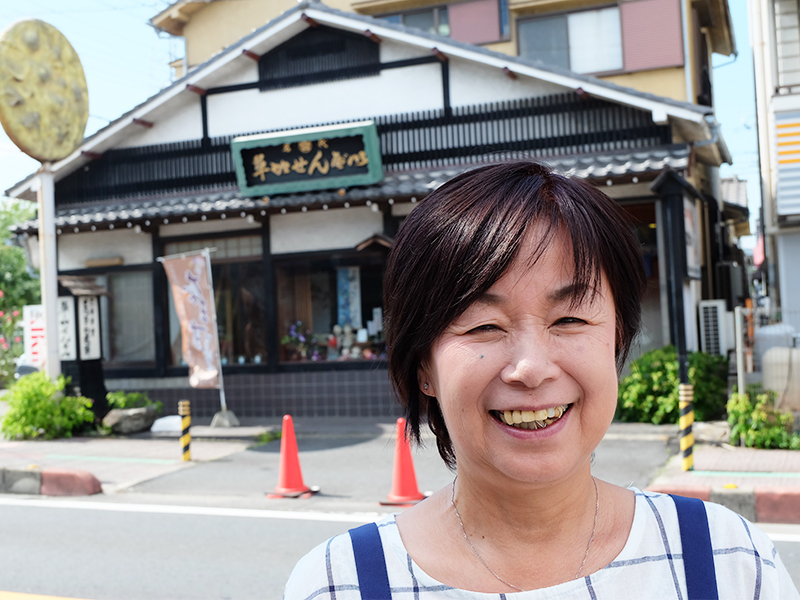
This is a long-established rice cracker shop recognized by its large signboard. The cute "namazu sembei (rice cracker)" in the shape of a catfish symbolize Yoshikawa, the home of the catfish, and is a popular souvenir. Another favorite with many repeat customers are the Yoshikawa Chips, made with 100% Yoshikawa-grown rice flour and deep-fried in a secret recipe of soy sauce and vegetable oil. Both products have been certified as premium brands by Yoshikawa City.

The Kinchakuda Park was formed by the zigzagging flow of the Koma River that runs through Hidaka City, and is called Kinchakuda because its shape resembles a kinchaku (traditional drawstring money pouch). The park is a 500 meter diameter flatland surrounded by a river with a surface area of about 22 hectares. Flowers such as rape blossoms and cosmos bloom every season, but the highlight is the 5 million red spider lilies that dye the park crimson every autumn, like a giant, beautiful red carpet.
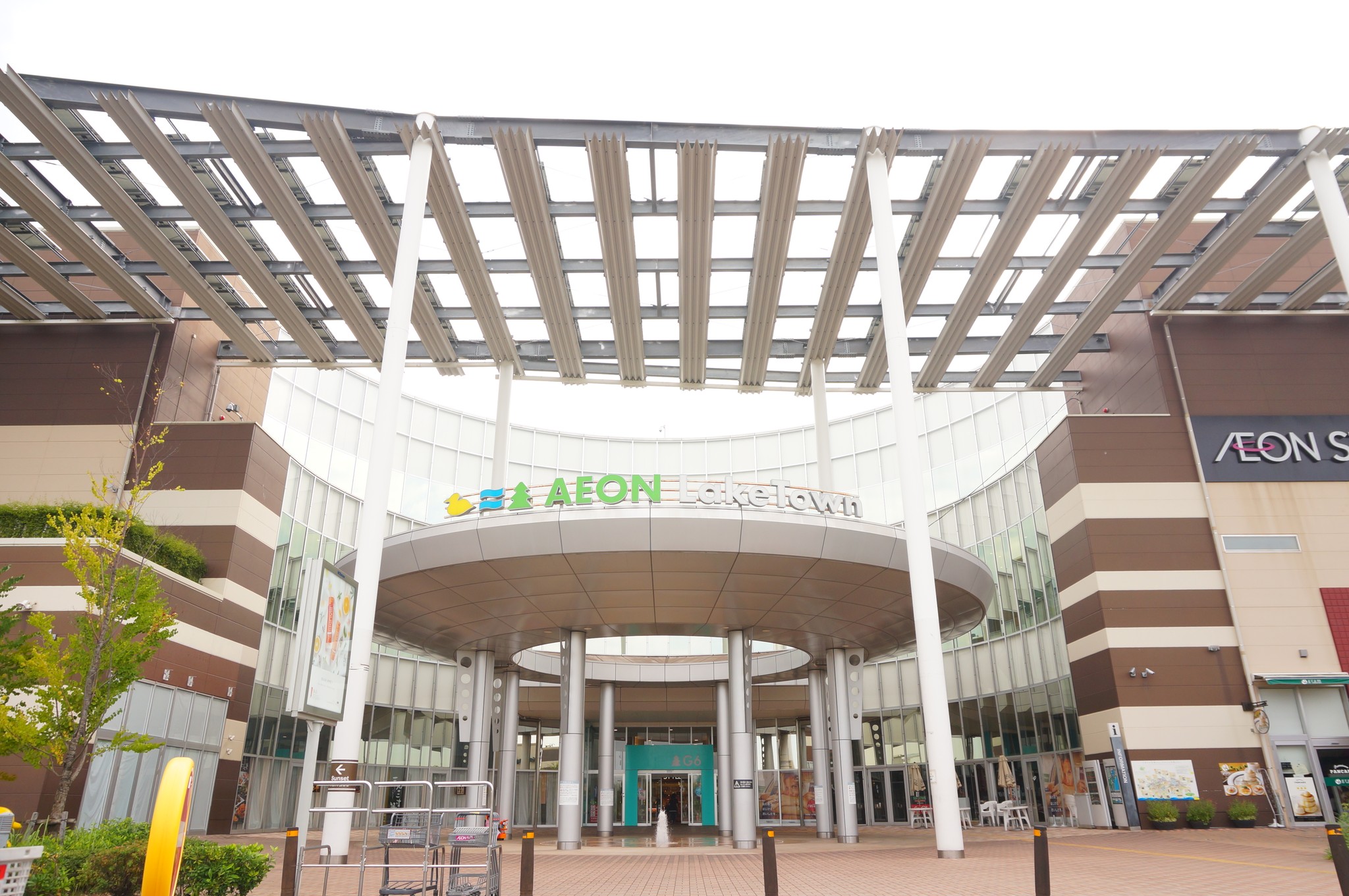
AEON Lake Town is one of the largest shopping malls in Japan, with over 700 specialty shops and Aeon Style grocery store located in three buildings: kaze, mori and outlet.
This site uses cookies to improve the user experience. If you continue to browse, you consent to the use of cookies on this site. Accept
CONTACT
